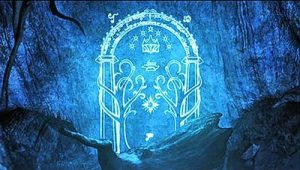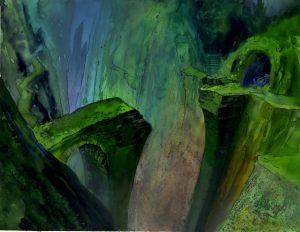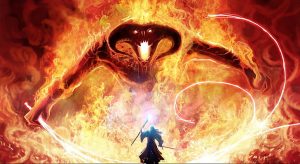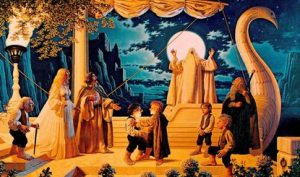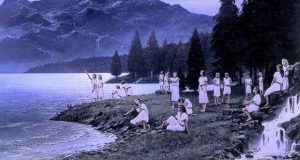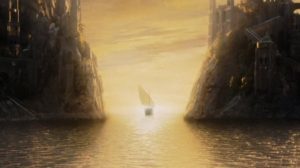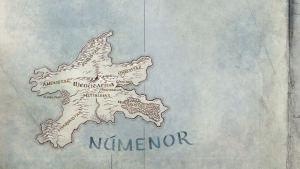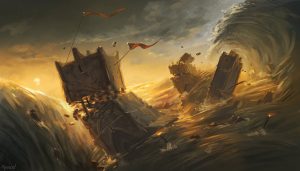Peter Jackson did a lot of things right when he adapted J.R.R. Tolkien’s The Lord Of The Rings to the big screen. That’s not up for debate, at least not to me. The simple way in which he empowers Frodo on Mount Doom? Flawless. The additional scenes that enrich Boromir’s character? Impeccable. The lighting of the beacons? Unsurpassable. Jackson gave us probably the best adaptation we could have asked for: a masterpiece of modern cinema that honored the already legendary source material, while making it accessible to general audiences.

But then he goes and turns Sauron into a giant floating eyeball, and it’s like: seriously, PJ? You were doing so well! I mean, you butchered Faramir…and Merry…and Gimli, and Treebeard, and nearly Théoden too, but other than that you were doing so well!
On paper, this decision probably seemed like a great way to very literally interpret Tolkien’s repeated references to the malevolent, all-seeing Eye of Sauron. But in execution (and perhaps especially in hindsight, now that the sheer spectacle of a fiery CGI eyeball isn’t enough on its own to distract from the inherent silliness of that idea), Jackson’s Sauron comes across as underwhelming and unscary. He’s inspired a great many memes (most of which ask, quite profoundly I might add, what the CGI eyeball planned to actually do with the One Ring when he had obtained it, seeing as Jackson’s version seemed to lack any fingers), but fear and awe: not so much.
Yet unfortunately, it’s that image of Sauron as an eye suspended between the prongs of Barad-dûr that has become embedded in the public consciousness, supplanting both Tolkien’s own written words, and the works of countless Tolkien artists and illustrators who preceded Jackson. And the fact that Jackson’s Sauron is so borderline cartoonish has only made it easier for people to claim that Sauron is a “one-dimensional” villain and that therefore The Lord Of The Rings is a shallow “good vs. evil” fantasy. I can understand why: if I only knew Sauron as a floating eye, I too would have a hard time believing he has one of the most fascinating character arcs in all of Tolkien’s legendarium.
But Amazon Prime’s The Lord Of The Rings finally has an opportunity to change the public perception of Sauron. I’m not saying I want people to think of him as a misunderstood antihero or anything like that, but it would be nice to finally give general audiences a clearer idea of his nuances, and the layers to his motivations beyond just wanting to “cover all the lands in a second darkness”, than they would necessarily get from watching Jackson’s movies or even from reading The Lord Of The Rings itself.
The bare bones of Sauron’s backstory are covered in The Silmarillion, a compendium of tales and legends from Middle-earth’s prehistory. It’s very briefly explained there that Sauron was once a Maia – which in Tolkien’s universe means that he was something like an angel; very powerful, but a lesser spirit compared to the archangels, or Valar, who answered directly to “God”, Eru Ilúvatar. Dig a little deeper, and you’ll discover that before he was known as Sauron, this particular Maia went by the name of Mairon (which translates to The Admirable). He was a craftsman and artisan for the Valar…until he was seduced to the darkness by the fallen angel, Morgoth.
As Morgoth’s most trusted lieutenant, Mairon’s power only increased – and he became known as Sauron (The Abhorred). Throughout The Silmarillion, he and Morgoth are depicted as being largely of the same mind: and even after Morgoth’s downfall (and I mean that in the most literal sense of the word), Sauron rejects the mercy of the Valar and chooses to hide in Middle-earth, seemingly to continue Morgoth’s agenda of chaos. When he conquers the kingdom of Númenor from within, he sets up temples to Morgoth and establishes a death-cult around his former master. It’s easy to see why many fans ship the two: they’re cute in a…toxic, vicious, self-destructive sort of way.

But in my opinion, even The Silmarillion strips away many of Sauron’s fascinating layers – understandably, because in its published form its basically an abridged version of a much larger and more intricate epic. Tolkien’s most concise and insightful exploration into the psyche of Sauron (again, just my opinion; feel free to disagree) comes from Morgoth’s Ring, one of many posthumously published texts on Middle-earth:
“[Sauron] did not object to the existence of the world, so long as he could do what he liked with it. He still had the relics of positive purposes, that descended from the good of the nature in which he began: it had been his virtue (and therefore also the cause of his fall, and of his relapse) that he loved order and coordination, and disliked all confusion and wasteful friction….his capability of corrupting other minds, and even engaging their service, was a residue from the fact that his original desire for ‘order’ had really envisaged the good estate (especially physical well-being) of his ‘subjects'”
I’ve referred back to this idea a number of times, and I’ve used the term “perfectionist” to describe Sauron because that’s basically what he was, before, you know…the business with the Ring. Unlike Morgoth, Sauron didn’t want to destroy Middle-earth, and Tolkien himself points out the differences between the two, writing elsewhere in Morgoth’s Ring that Morgoth represents “sheer nihilism, and negation its one ultimate object”. Morgoth wanted to literally unmake the universe; but Sauron genuinely wanted to improve upon it. And he wanted to rule the universe he fashioned in his own “perfect” image.
We can see some of that still in the Second Age of Middle-earth, following Morgoth’s downfall. He never repented of his heinous deeds, but motivated by his jealousy of the Valar and their paradise he did genuinely want to redesign Middle-earth into something beautiful – more beautiful than anything the Valar could boast of in their Blessed Realm across the sea. As Tolkien writes above, he wanted to be a tyrant, but a “good” one, one worthy of the worship and reverence he would demand and receive from his subjects regardless. One could say there’s a desperate need for self-validation in that motive; a need to prove to himself that he was still good, that Morgoth had not corrupted him entirely.
But by joining Morgoth and turning away from true perfection (i.e. Eru Ilúvatar, who made the universe and all things in it), Sauron’s noble motives were perverted and distorted to suit his master’s nihilistic goal. In Tolkien’s legendarium, only Eru is capable of creation – Morgoth, Sauron, and all those who try to imitate Eru out of spite or jealousy, are at best only capable of copying the things Eru has created, or at worst of corrupting those things. For example, Morgoth’s trolls were his inferior copies of the Ents, while his orcs were Elves and Men whose bodies and souls he had mutilated. Sauron in turn became incapable of creating anything truly beautiful or perfect.
Now imagine how that must torture a perfectionist! Did it pain him to know that everything he touched would ultimately be corrupted, that his grand aspirations were literally unachievable? Or did it only further fuel his violent envy of the Valar and of Eru? Did he become a nihilist like Morgoth before him, convinced that if he could not fix the world because he himself stood in the way of that goal, he could at least tear everything down? Sauron would make a fascinating subject for a character study.
And with Amazon’s The Lord Of The Rings, that could finally happen – at least in some form. Amazon’s show is set during the Second Age, right at that crucial midpoint in Sauron’s journey where the best and worst of his qualities are in play, warring for control over him. Morgoth is out of the picture, yet still wields power over his lieutenant’s heart. Sauron is free to be good, even perhaps desires to be good, but cannot bear the humiliation of surrendering to the Valar. Ah, the inner turmoil!

If Amazon pulls this off, it would be extraordinary. Some people will probably complain about how it’s unnecessarily overcomplicating a straightforward villain, and I get all that, but also…I just want people to know that there’s more to Sauron than a giant eyeball! Is that really so wrong?
Anyway, what do you want to see from Amazon’s The Lord Of The Rings? Feel free to share your own thoughts, theories, and opinions, in the comments below!
